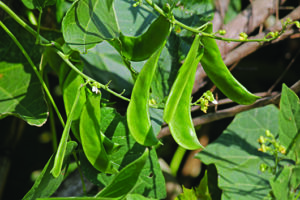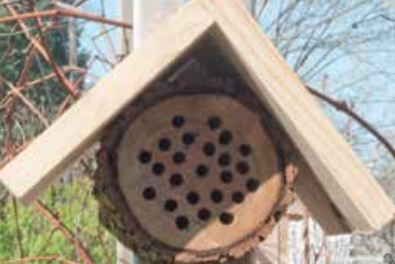Large-seeded pole lima beans are a unique crop produced by direct market growers and home gardeners in the Mid-Atlantic region.
Unlike most legume crops, pole lima beans are usually transplanted into the field. This is because seed is expensive and sometimes hard to procure and because plants are spaced at 4 to 6 feet in the row. Here are some tips for successful production of pole lima transplants.
Quality Seed
Pole lima bean seed can be difficult to procure and consequently many growers save their own seed. Plant seeds that are free of obvious damage from fungi and insects. Fully dry seed should be stored in a sealed container (such as a lidded jar) in the refrigerator for maximum longevity and vigor.
Planting Date
Pole lima beans should be transplanted after the danger of frost. I aim for a mid-May planting in my research plots in Georgetown, Del. Because of their large seeds, which store lots of energy for the seedling, pole bean transplants grow quickly and the time from seeding to transplant is short, about three weeks. It is not necessary to keep pole beans in pots longer than it takes for the seedlings to emerge and fully expand their primary leaves.
Pots and Media
Use pots with a diameter of 2.5-3 inches. Styrofoam cups can make a good pole bean seedling pot if you poke a hole in the bottom to provide drainage. Use pasteurized potting media to reduce incidence of seedling diseases. Avoid using potting media that is formulated for seed starting; this type of media is designed for germination of small-seeded crops and stays wetter than ideal for pole beans.
Seeding, Water, Temperature
Seeds should be planted 1.5 inches deep. I have been asked many times whether I plant my pole limas “eye up” or “eye down”. I guess I am wishy-washy because I plant them laying flat on their sides! Maintaining proper moisture and temperature is probably more important than seed orientation. Transplants should be grown in a greenhouse or other warm, high light location. Water very well after seeding and keep media moist but not wet until plants have emerged. Maintain soil temperatures at around 80 degrees F for quickest emergence. Heat mats are useful for this. If you provide ideal conditions for germination you will soon (four days) see those green hypocotyls arching out of the potting media. After emergence, transplants can be moved off of heat mats if in a warm location.
Handle Gently & Harden Off
When seedlings have fully expanded their primary leaves they should be moved to a protected outdoor location to harden-off for about seven days. When handling transplants avoid breaking off the cotyledons as they store energy and nutrients for the growing seedling. Plants with missing cotyledons will be stunted and grow slowly. Do not keep transplants in pots longer than necessary, this too will stunt growth.
Also, transplants that begin rapid shoot growth in the pot quickly become tangled with one another.
At transplanting, handle plants gently to avoid breaking off cotyledons or shoots.
(Editor’s note: Emmalea Ernest is a Vegetable & Fruit Crops Scientist for Delaware Cooperative Extension.)





